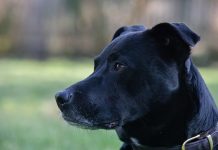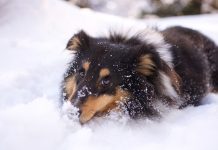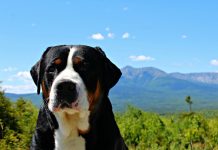History and Origins of the Great Pyrenees Breed

The Great Pyrenees, also known as the Pyrenean Mountain Dog, is an ancient breed that originated in the Pyrenees Mountains of France and Spain. Here is a brief overview of the history and origins of the Great Pyrenees:
- Ancient Livestock Guardian:
- The Great Pyrenees has a long history as a guardian of livestock, particularly sheep, in the mountainous regions of the Pyrenees.
- They were highly valued by shepherds for their protective instincts and ability to deter predators, such as wolves and bears.
- Noble Heritage:
- The breed was favored by French nobility and royalty, including Louis XIV, who declared the Great Pyrenees the Royal Dog of France.
- They were also prized as companions and protectors of estates and chateaux.
- Purpose and Role:
- Great Pyrenees were bred to work independently and make decisions on their own when protecting livestock from predators.
- They are known for their fearlessness, intelligence, and loyalty.
- Breed Standardization:
- The breed was recognized by the American Kennel Club (AKC) in 1933. The breed standard emphasizes their strength, size, and protective instincts.
- Great Pyrenees continue to be used as livestock guardians and are also valued as family companions and show dogs.
Physical Characteristics and Appearance of Great Pyrenees
The Great Pyrenees is a large and majestic breed known for its imposing size, beautiful coat, and gentle expression. Here are the key physical characteristics and appearance traits of the Great Pyrenees:
- Size:
- Great Pyrenees are a large breed with males typically standing 27 to 32 inches (69 to 81 cm) at the shoulder, and females slightly smaller at 25 to 29 inches (63 to 74 cm).
- Adult dogs weigh between 100 to 160 pounds (45 to 73 kg), with males being heavier than females.
- Body Structure:
- The Great Pyrenees has a sturdy and well-balanced build with a broad chest and muscular body.
- They have a level back, strong legs, and a distinctive rolling gait.
- Head and Face:
- The head is proportionate to the body, with a slightly rounded skull and a well-defined stop.
- They have dark, almond-shaped eyes that convey intelligence and kindness. Eye rims are typically dark.
- Coat and Color:
- Great Pyrenees have a weather-resistant double coat with a dense undercoat and a long, thick outer coat that is straight or slightly wavy.
- The coat is predominantly white, often with markings of gray, tan, or reddish-brown on the ears, face, and sometimes along the body.
- Tail:
- The tail is long, plumed, and carried low when relaxed, but may be raised in a hook over the back when alert.
- Expression:
- Great Pyrenees have a calm and composed expression, reflecting their gentle and affectionate nature.
- Their overall appearance exudes strength, confidence, and grace.
- Overall Impression:
- Great Pyrenees are majestic and impressive dogs, known for their imposing presence and regal demeanor.
- They are agile for their size and have a confident yet gentle disposition.
The Great Pyrenees’ physical characteristics and appearance reflect their heritage as capable working dogs and beloved companions. They require regular grooming to maintain their coat and benefit from ample space to roam and exercise due to their large size and heritage as mountain guardians.
Great Pyrenees Temperament and Personality Traits
The Great Pyrenees is known for its calm, gentle, and protective temperament. These majestic dogs exhibit several key personality traits that make them excellent companions and guardians:
- Loyal and Devoted:
- Great Pyrenees are incredibly loyal to their families and form strong bonds with their human companions. They are dedicated protectors who will defend their loved ones fearlessly.
- Gentle and Patient:
- Despite their large size, Great Pyrenees have a gentle and patient nature, especially with children and smaller animals. They are known for their nurturing and nurturing demeanor.
- Independent Thinkers:
- Great Pyrenees are independent dogs with a strong sense of intelligence. They have a tendency to think for themselves and make decisions based on their instincts.
- Protective Instincts:
- Bred to guard livestock, Great Pyrenees have strong protective instincts. They are naturally wary of strangers and will alert their owners to any potential threats or intruders.
- Calm and Laid-Back:
- Great Pyrenees have a calm and laid-back demeanor, making them well-suited for households that appreciate a relaxed atmosphere. They are not high-energy dogs but require regular exercise.
- Alert and Watchful:
- These dogs are highly alert and watchful, always aware of their surroundings. They make excellent watchdogs due to their keen senses and ability to detect unusual activity.
- Reserved with Strangers:
- Great Pyrenees can be reserved or aloof with strangers, which is part of their protective nature. Early socialization is essential to help them become well-adjusted and confident.
- Moderate Activity Level:
- Great Pyrenees have a moderate activity level and enjoy daily walks and play sessions. They are not overly active but benefit from regular exercise to stay healthy and happy.
Training and Socialization Needs for Great Pyrenees
Training and socialization are crucial for Great Pyrenees due to their protective instincts and independent nature. Here are some important considerations for training and socializing your Great Pyrenees:
- Early and Consistent Training:
- Start training your Great Pyrenees puppy as soon as possible using positive reinforcement techniques. Be patient and consistent in your approach to encourage obedience and good behavior.
- Socialization with People and Animals:
- Expose your Great Pyrenees puppy to various people, animals, and environments from a young age. This helps prevent shyness or fearfulness later on.
- Supervise interactions with other dogs, especially smaller breeds, due to the Great Pyrenees’ natural guardian instincts.
- Basic Obedience Commands:
- Teach basic obedience commands such as sit, stay, come, and leash walking. Great Pyrenees are intelligent dogs but can be stubborn, so keep training sessions engaging and positive.
- Guardian Instincts:
- Channel their natural guardian instincts into appropriate behavior. Teach them to differentiate between normal visitors and potential threats to avoid over-protectiveness.
- Positive Reinforcement:
- Use positive reinforcement techniques such as treats, praise, and rewards to motivate your Great Pyrenees during training. Harsh training methods can be counterproductive with this sensitive breed.
- Exercise and Mental Stimulation:
- Provide regular exercise and mental stimulation to prevent boredom and destructive behaviors. Interactive toys and puzzle games can help keep their minds engaged.
- Consistent Socialization:
- Continue socializing your Great Pyrenees throughout their life to ensure they remain confident and well-adjusted. Expose them to new experiences and environments regularly.
By investing time and effort into training and socialization, you can help your Great Pyrenees develop into a well-behaved, confident, and loving companion. Their protective nature and gentle temperament make them wonderful family dogs, provided they receive the guidance and care they need to thrive.
Health Considerations and Common Issues in Great Pyrenees
Like all breeds, Great Pyrenees are prone to certain health conditions and issues that prospective owners should be aware of. While not all dogs will experience these problems, it’s essential to understand the potential health risks associated with the breed:
- Hip Dysplasia:
- Great Pyrenees are susceptible to hip dysplasia, a genetic condition where the hip joint doesn’t develop properly. This can lead to arthritis and mobility issues.
- Regular exercise, maintaining a healthy weight, and joint supplements can help manage symptoms. Severe cases may require surgical intervention.
- Elbow Dysplasia:
- Elbow dysplasia is a common condition in large breeds like the Great Pyrenees, characterized by abnormal development of the elbow joint.
- Symptoms include lameness, pain, and decreased range of motion. Treatment may involve medications, physical therapy, or surgery.
- Patellar Luxation:
- Patellar luxation occurs when the kneecap (patella) dislocates from its normal position, causing pain and lameness.
- Mild cases may not require treatment, but severe cases may require surgical correction.
- Bloat (Gastric Dilatation-Volvulus):
- Great Pyrenees are at higher risk of developing bloat, a life-threatening condition where the stomach fills with gas and twists.
- Symptoms include restlessness, unproductive vomiting, and a swollen abdomen. Immediate veterinary attention is essential.
- Heart Conditions:
- Some Great Pyrenees may be prone to heart conditions such as dilated cardiomyopathy (DCM) or mitral valve disease.
- Regular veterinary check-ups and diagnostic testing can help detect and manage heart conditions.
- Hypothyroidism:
- Hypothyroidism is a common endocrine disorder in Great Pyrenees, characterized by insufficient thyroid hormone production.
- Symptoms include weight gain, lethargy, and coat changes. Treatment involves lifelong hormone replacement therapy.
- Eye Issues:
- Great Pyrenees may be susceptible to certain eye conditions such as progressive retinal atrophy (PRA) or cataracts.
- Regular eye exams by a veterinary ophthalmologist are recommended to monitor for any developing issues.
- Cancer:
- Like many large breeds, Great Pyrenees have a higher risk of developing certain types of cancer, including osteosarcoma and lymphoma.
- Early detection and treatment can improve prognosis.
Living with a Great Pyrenees: Suitable Environments and Lifestyle Considerations

Great Pyrenees are majestic and gentle giants that thrive in specific environments and require a certain lifestyle to stay happy and healthy. Here are some considerations for living with a Great Pyrenees:
- Space and Environment:
- Great Pyrenees are large dogs that require ample space to move around. They do well in homes with large fenced yards or rural settings where they can roam and explore.
- Climate Considerations:
- Great Pyrenees have a thick double coat suited for colder climates. They may struggle in hot weather and require access to shade and plenty of water during warm months.
- Exercise Needs:
- Despite their calm demeanor, Great Pyrenees benefit from daily exercise to maintain their physical and mental well-being.
- Long walks, playtime, and interactive activities are essential to prevent obesity and boredom.
- Grooming:
- Great Pyrenees have a dense, weather-resistant coat that requires regular grooming to prevent matting and tangles.
- Brush their coat several times a week and more frequently during shedding seasons to maintain their coat’s health and appearance.
- Socialization and Training:
- Early socialization is crucial to help Great Pyrenees become well-adjusted and confident around people and other animals.
- Positive reinforcement training methods work best with this breed, as they respond well to praise and rewards.
- Companionship:
- Great Pyrenees thrive on companionship and enjoy being part of the family. They may develop separation anxiety if left alone for long periods.
- Spend quality time with your Great Pyrenees, including interactive play, training sessions, and affectionate bonding.
- Veterinary Care:
- Schedule regular veterinary check-ups and preventive care to monitor your Great Pyrenees’ health and detect any potential issues early.
- Stay proactive about vaccinations, parasite control, and dental care to ensure their overall well-being.
By providing the right environment, exercise, grooming, training, and companionship, you can create a rewarding and fulfilling life with your Great Pyrenees. Their gentle nature, loyalty, and protective instincts make them wonderful family companions and guardians when given the proper care and attention they deserve.
Great Pyrenees Variations and Breeding Practices
The Great Pyrenees breed is relatively consistent in its appearance and characteristics, but variations can occur within the breed due to factors such as coat color, size, and minor differences in physical features. Additionally, responsible breeding practices aim to maintain the breed’s standard while promoting health, temperament, and conformation. Here are some aspects related to Great Pyrenees variations and breeding practices:
Coat Color Variations:
- Solid White: The most common and recognized coat color for Great Pyrenees is solid white, which is preferred by breed standards.
- Badger Markings: Some Great Pyrenees may have “badger” markings, which are gray or tan patches on the head, ears, and sometimes along the body. These markings are acceptable within the breed standard.
- Slight Color Variations: While predominantly white, Great Pyrenees may exhibit slight variations in shade, such as off-white or cream, but these deviations are generally minor.
Size Variations:
- Standard Size: Great Pyrenees are a large breed, with males typically standing between 27 to 32 inches (69 to 81 cm) at the shoulder and females slightly smaller, ranging from 25 to 29 inches (63 to 74 cm).
- Weight Range: Adult Great Pyrenees generally weigh between 100 to 160 pounds (45 to 73 kg), with males being heavier than females.
Breeding Practices for Great Pyrenees:
- Health Screening: Responsible breeders conduct health screenings for genetic conditions common in the breed, such as hip dysplasia, elbow dysplasia, and heart issues.
- Conformation to Breed Standard: Breeders adhere to the Great Pyrenees breed standard set by kennel clubs and breed organizations, focusing on maintaining the characteristic appearance, temperament, and working abilities of the breed.
- Temperament and Working Ability: Emphasis is placed on preserving the Great Pyrenees’ original traits as a guardian and protector of livestock, including their calm demeanor, protective instincts, and intelligence.
- Genetic Diversity: Maintaining genetic diversity within the Great Pyrenees gene pool is important to prevent the accumulation of genetic disorders and preserve the overall health and vitality of the breed.
- Ethical Practices: Reputable breeders prioritize the welfare of their dogs and adhere to ethical breeding practices, including proper socialization, early puppy care, and responsible placement of puppies into suitable homes.
Rare Varieties and Crossbreeding:
- While Great Pyrenees are typically bred according to the standard, rare variations or deviations in coat color or markings may occur naturally within the breed.
- Crossbreeding with other breeds is generally discouraged among responsible breeders to preserve the unique characteristics and heritage of the Great Pyrenees breed.
Overall, responsible breeding practices for Great Pyrenees focus on producing healthy, well-rounded puppies that conform to the breed standard and exhibit the breed’s desirable traits. Breeders prioritize the health, temperament, and conformation of their dogs, ensuring that future generations of Great Pyrenees maintain their status as beloved companions and capable working dogs.
60 Best Names with Meanings for Great Pyrenees
Naming your Great Pyrenees can be a delightful experience, especially when you choose a name that reflects their majestic and noble nature. Here are 60 great names with meanings for your Great Pyrenees:
Male Great Pyrenees Names:
- Odin – Norse god of wisdom and war.
- Thor – Norse god of thunder.
- Loki – Trickster god in Norse mythology.
- Ares – Greek god of war.
- Zeus – King of the Greek gods.
- Apollo – Greek god of the sun and light.
- Tiberius – Latin name meaning “strong like the river.”
- Maximus – Latin name meaning “greatest.”
- Titan – Represents great strength and power.
- Hercules – Mythical hero known for his strength.
- Cyrus – Persian name meaning “sun.”
- Kodiak – Inspired by the Kodiak bear, symbolizing strength.
- Grizzly – Represents a type of bear known for its size.
- Finn – Irish name meaning “fair” or “white.”
- Bodhi – Sanskrit name meaning “enlightenment.”
- Atlas – Titan of Greek mythology who held up the sky.
- Orion – Hunter in Greek mythology, symbolizing strength.
- Samson – Biblical figure known for his strength.
- Winston – English name meaning “joy stone.”
- Goliath – Giant from the Bible known for his strength.
- Kaiser – German name meaning “emperor.”
- Spartacus – Roman gladiator and freedom fighter.
- Argos – Name of Odysseus’ loyal dog in Greek mythology.
- Bruno – Germanic name meaning “brown.”
- Aldo – Italian name meaning “old and wise.”
Female Great Pyrenees Names:
- Athena – Greek goddess of wisdom and warfare.
- Freya – Norse goddess of love and beauty.
- Nova – Latin name meaning “new” or “young.”
- Luna – Latin name meaning “moon.”
- Stella – Latin name meaning “star.”
- Aurora – Latin name meaning “dawn.”
- Willow – Named after the graceful tree.
- Iris – Greek goddess of the rainbow.
- Cleo – Short for Cleopatra, meaning “glory of the father.”
- Phoebe – Greek name meaning “bright” or “radiant.”
- Zelda – German name meaning “gray fighting maid.”
- Mystique – Represents mystery and allure.
- Juniper – Named after the aromatic shrub.
- Astra – Latin name meaning “star.”
- Zara – Arabic name meaning “princess.”
- Nyx – Greek goddess of the night.
- Aria – Italian name meaning “air” or “melody.”
- Serena – Latin name meaning “serene” or “calm.”
- Lola – Spanish name meaning “sorrows” or “lady of sorrows.”
- Esme – French name meaning “loved” or “esteemed.”
- Gypsy – Represents a free-spirited nature.
- Mabel – English name meaning “lovable.”
- Pearl – Symbolizes purity and beauty.
- Venus – Roman goddess of love and beauty.
- Daisy – Represents innocence and playfulness.
Gender-neutral Great Pyrenees Names:
- Sage – Represents wisdom and tranquility.
- Echo – Represents a sound reflection.
- Aspen – Named after the sturdy tree.
- Archer – Represents precision and skill.
- Skye – Named after the expansive sky.
- Blaze – Represents a bright flame or fire.
- Storm – Symbolizes power and intensity.
- Raven – Represents mystery and intelligence.
- Everest – Named after the majestic mountain.
- Scout – Represents a lookout or explorer.
Choose a name that resonates with your Great Pyrenees’ personality, appearance, or the qualities you admire. Whether you prefer a strong and noble name or something more unique and whimsical, the right name will be a perfect fit for your magnificent companion.

In conclusion, this comprehensive guide to Great Pyrenees dogs has provided a detailed overview of this majestic and gentle breed. Throughout our exploration, we’ve delved into the history, distinctive characteristics, and essential care considerations that define Great Pyrenees. Known for their calm demeanor, intelligence, and protective nature, Great Pyrenees make exceptional guardians and companions for families and individuals seeking a loyal and devoted pet. They excel in roles such as livestock guardians and therapy dogs, showcasing their versatility and adaptability. As you embark on your journey with a Great Pyrenees, may you appreciate their unique qualities and form a strong bond with this remarkable breed, creating lasting companionship and fulfillment together.






























